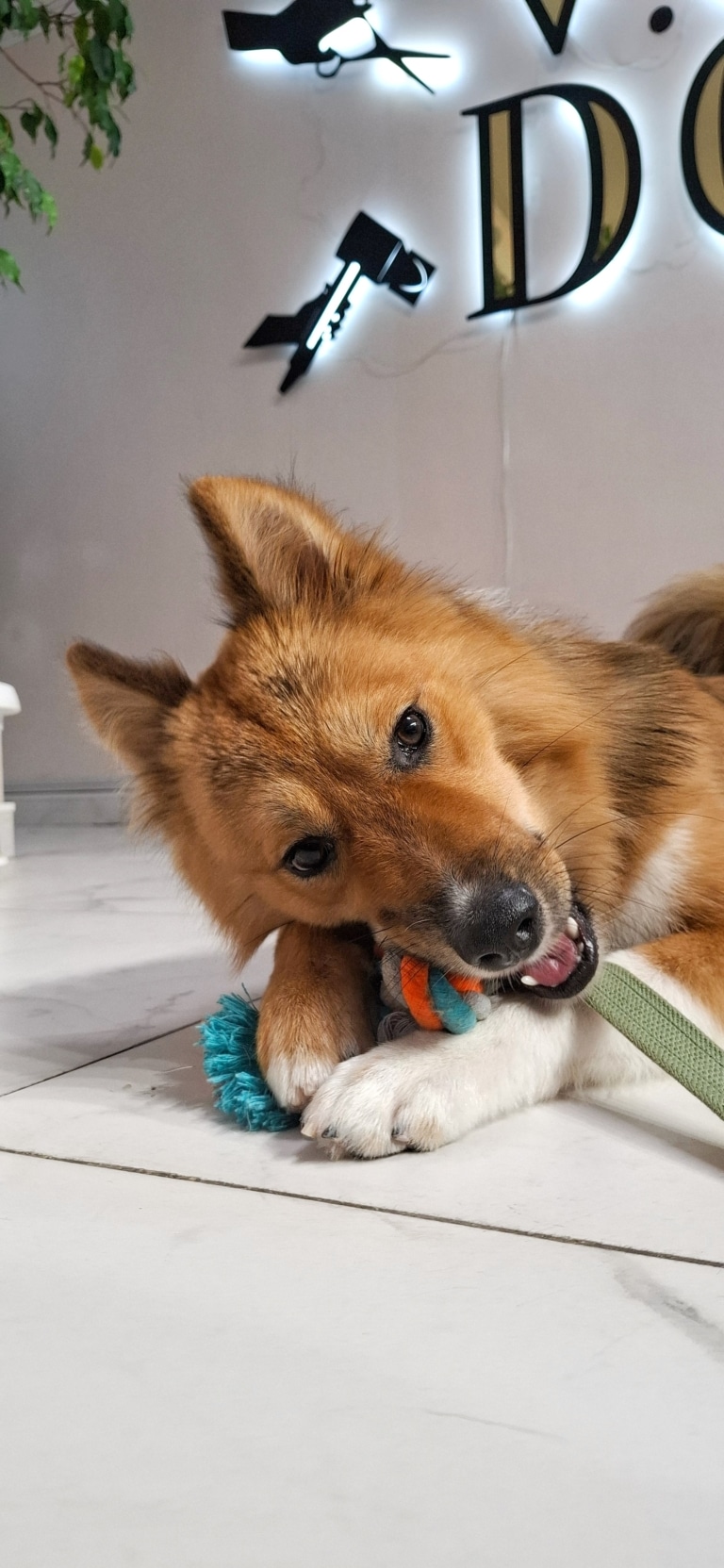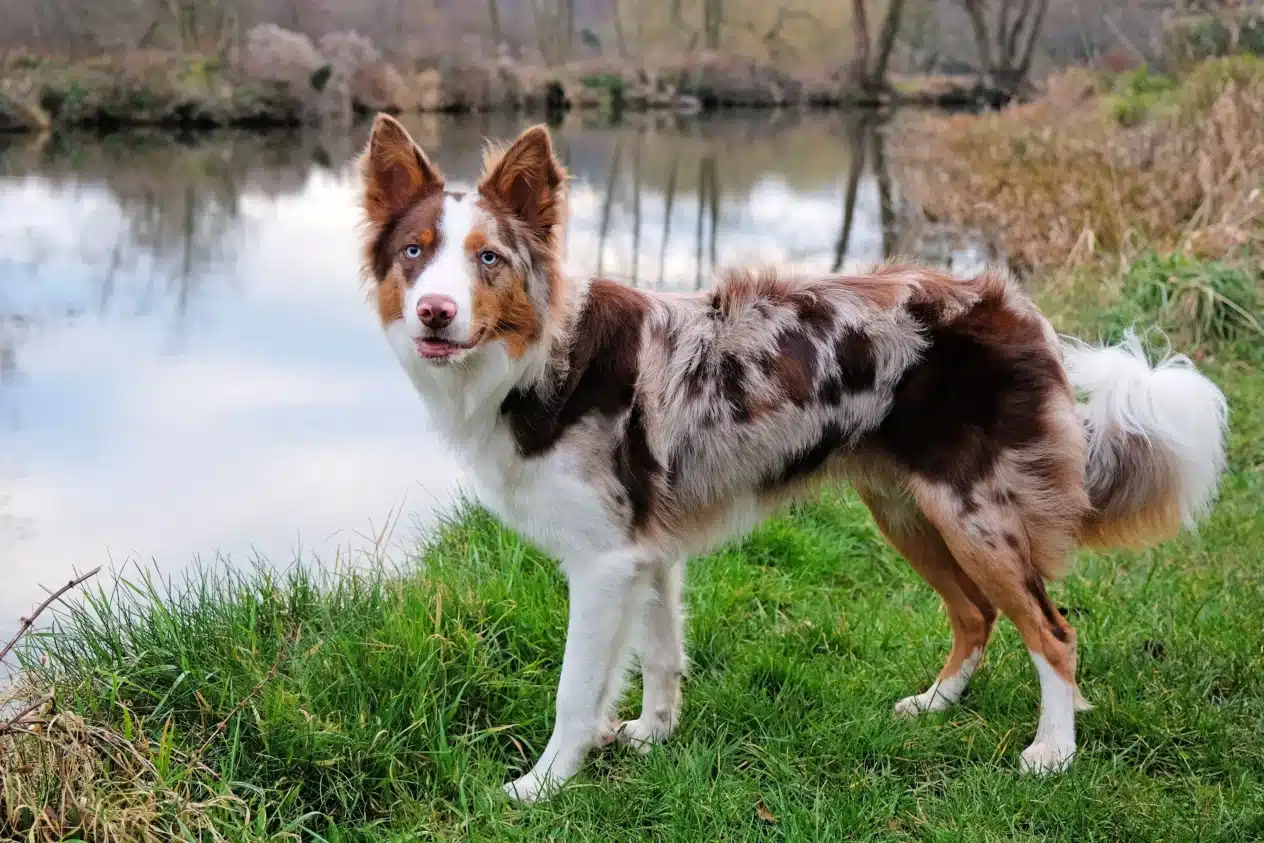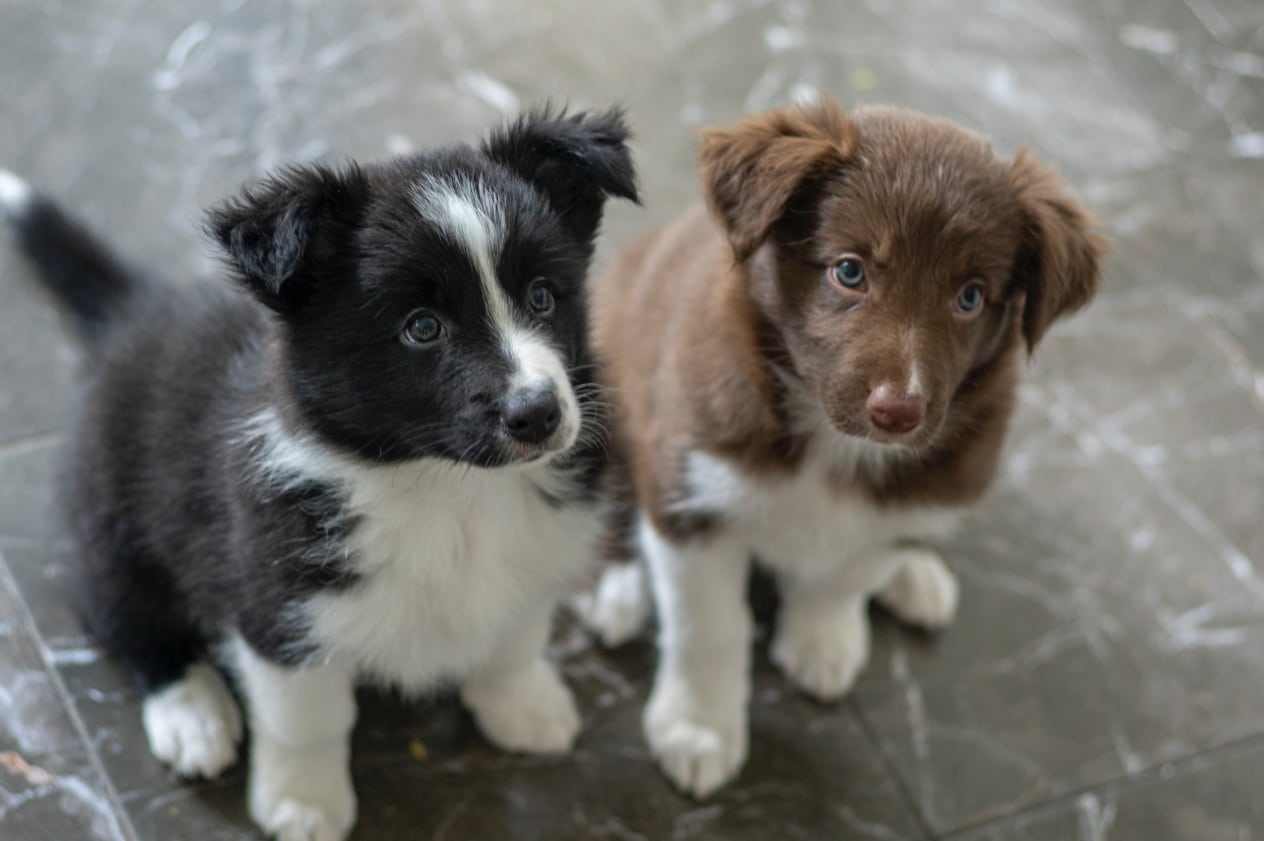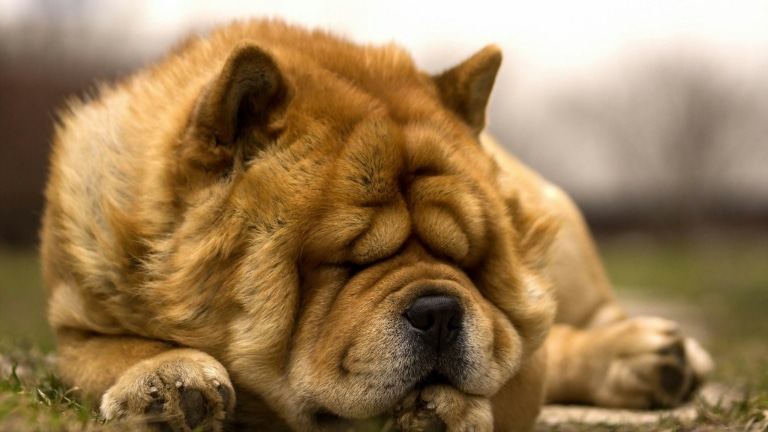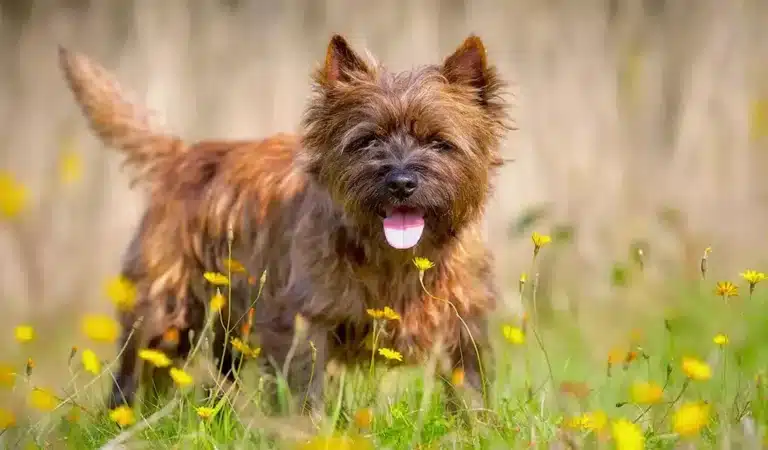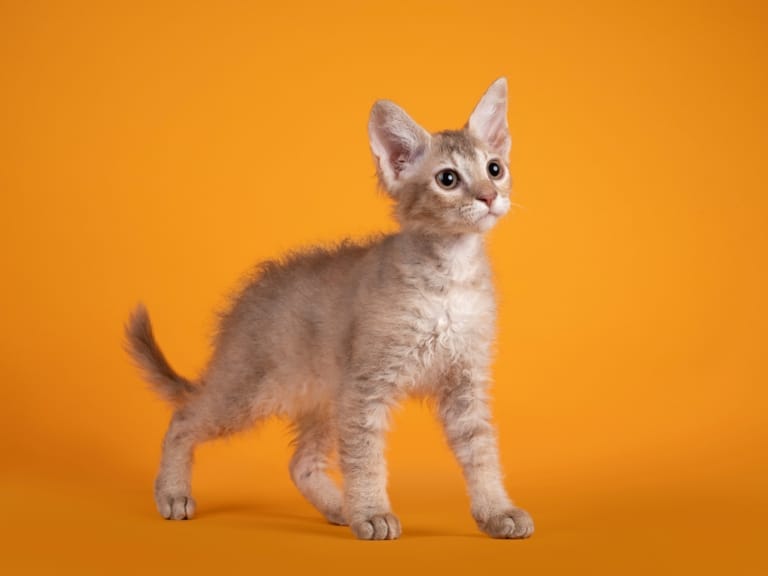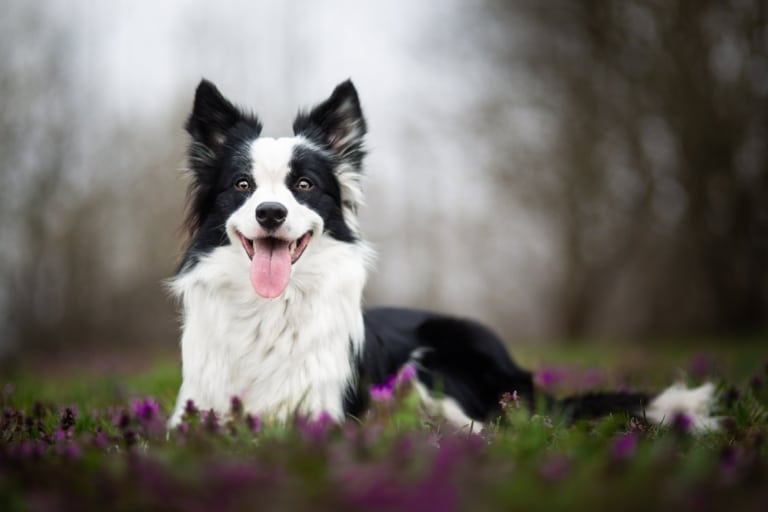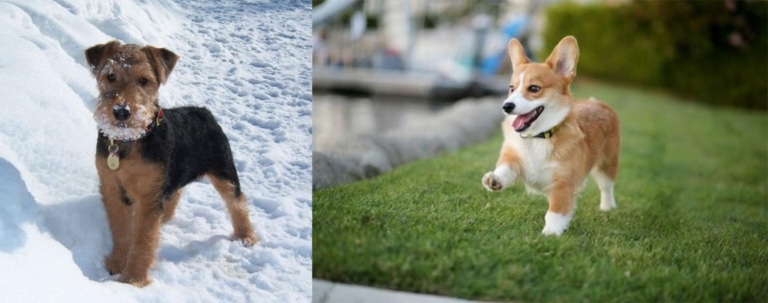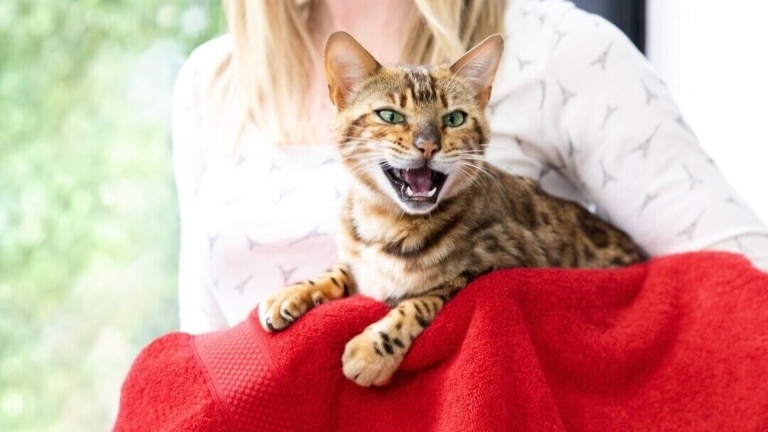If you’re looking for a tireless, intelligent, and loyal dog, the Border Collie is one of the best choices. This article will help you learn the most important things about them and make an informed decision. Ready to meet the smartest dog in the world? Let’s get started!
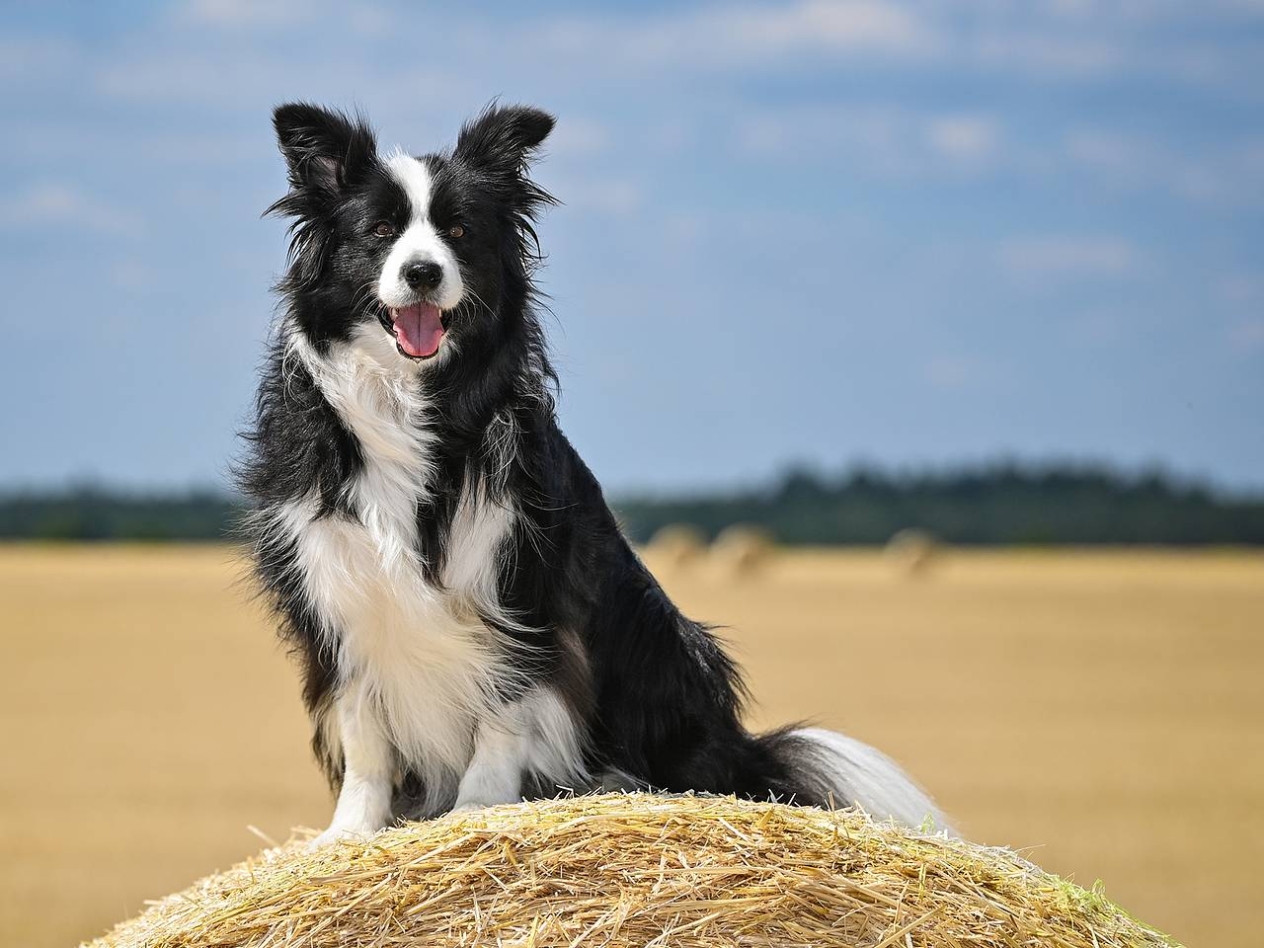
History of the Border Collie
The Border Collie originates from the border regions between Scotland and England, which is reflected in its name. They were bred specifically for herding sheep, developing a unique ability to control livestock without aggression. Unlike other herding dogs that nip at animals, Border Collies use an intense, focused gaze to direct the flock where needed.
The first mentions of the Border Collie date back to the 16th century, but the breed was officially recognized only in 1915. Their exceptional working abilities made them popular not only among farmers but also as search-and-rescue dogs, therapy companions, and top competitors in sports like agility and frisbee.
Appearance of the Border Collie
The Border Collie is a true athlete with a physique to match. Their body is flexible, muscular, well-balanced, and built for endurance. On average, these dogs weigh between 12 to 20 kg, with a height of 46 to 56 cm at the withers, depending on gender.
Their coat is of medium length with a dense undercoat, providing protection against harsh weather. The breed comes in a variety of colors, with the most common being black and white (classic), brown and white, blue merle (with marbled patches), red merle, and tricolor (black, white, and brown).
One of the most distinctive features of the Border Collie is their eyes. Their gaze can be mesmerizing, conveying emotions or even “commanding” actions. The typical eye color is dark brown, but in merle-colored dogs, the eyes can be lighter or even have heterochromia (different-colored eyes).
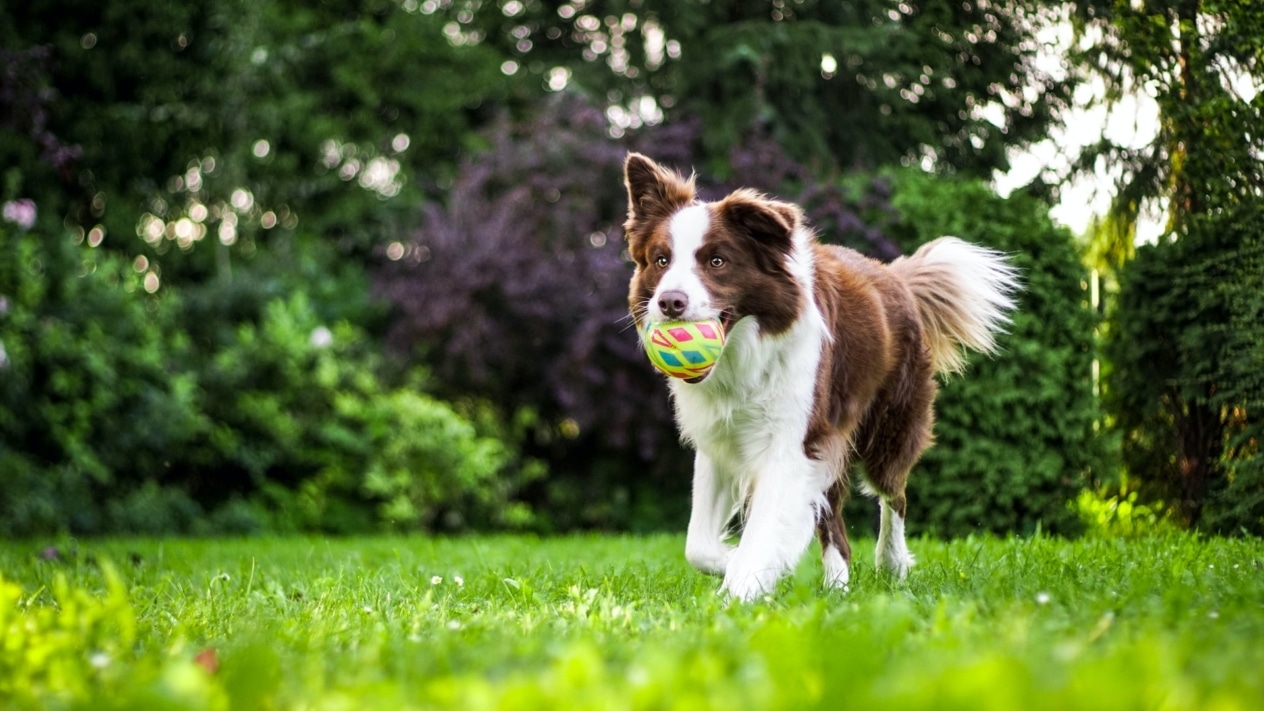
Border Collie Temperament
If you’ve ever heard of Border Collies, you probably know that they rank first among the smartest dog breeds. These dogs can memorize hundreds of commands and even recognize objects by name. However, their intelligence has a downside—boredom. If their mind isn’t sufficiently challenged, Border Collies will find something to do on their own, and chances are, you won’t like it. Chewed-up furniture, dug-up flower beds, or endless running around the house—these are all signs of unmet mental stimulation.
The ideal environment for this breed is a private home with a large yard where they can run freely. If you live in an apartment, simple walks around the block won’t be enough. Border Collies require running, ball games, frisbee, agility training, and other activities for at least two hours a day. A tired Border Collie is a happy Border Collie.
Despite their high energy, these dogs are extremely people-oriented. They form strong bonds with their owners and crave constant interaction, disliking prolonged solitude. If left alone for too long, they may become anxious or develop destructive behaviors.
If you have children, Border Collies generally get along well with them, but their natural herding instinct should be considered. They may try to “herd” kids by running around and directing them, which might not always be appreciated by the children themselves.

Training and Socialization of the Border Collie
Despite their incredible intelligence, Border Collies do not train themselves. Their intelligence is both an advantage and a challenge. They learn quickly, but they also pick up bad habits just as fast. This is why it’s important for the whole family to follow consistent rules—if you allow your dog on the couch one day but scold them for it the next, confusion and behavioral issues may arise.
Training and socialization should start as soon as the Border Collie enters your home. Puppies are most receptive to new experiences and information at an early age.
Begin with regular walks and introductions to other dogs and people. Keep in mind their natural herding instincts when interacting with other pet owners. Expose them to a variety of dogs with different temperaments, control the play process, and reward or correct their behavior as needed.
Your dog should gradually get used to different sounds and environments. Introduce them to street noises, car sounds, vacuum cleaners, hairdryers, rain, thunder, running water, children, and guests. Make these exposures gradual to avoid overwhelming them.
Additionally, teaching basic commands is essential for creating a comfortable and safe environment for both your dog and those around them. Work on commands like “Sit,” “Down,” “Wait,” “Place,” “Heel,” “No,” and “Fetch.” Keep training sessions short but effective—10-15 minutes, 2-3 times a day, will help maintain their interest and prevent fatigue.
If you encounter difficulties, a professional dog trainer can help resolve behavioral issues, improve communication with other animals, and teach your dog appropriate social interactions.
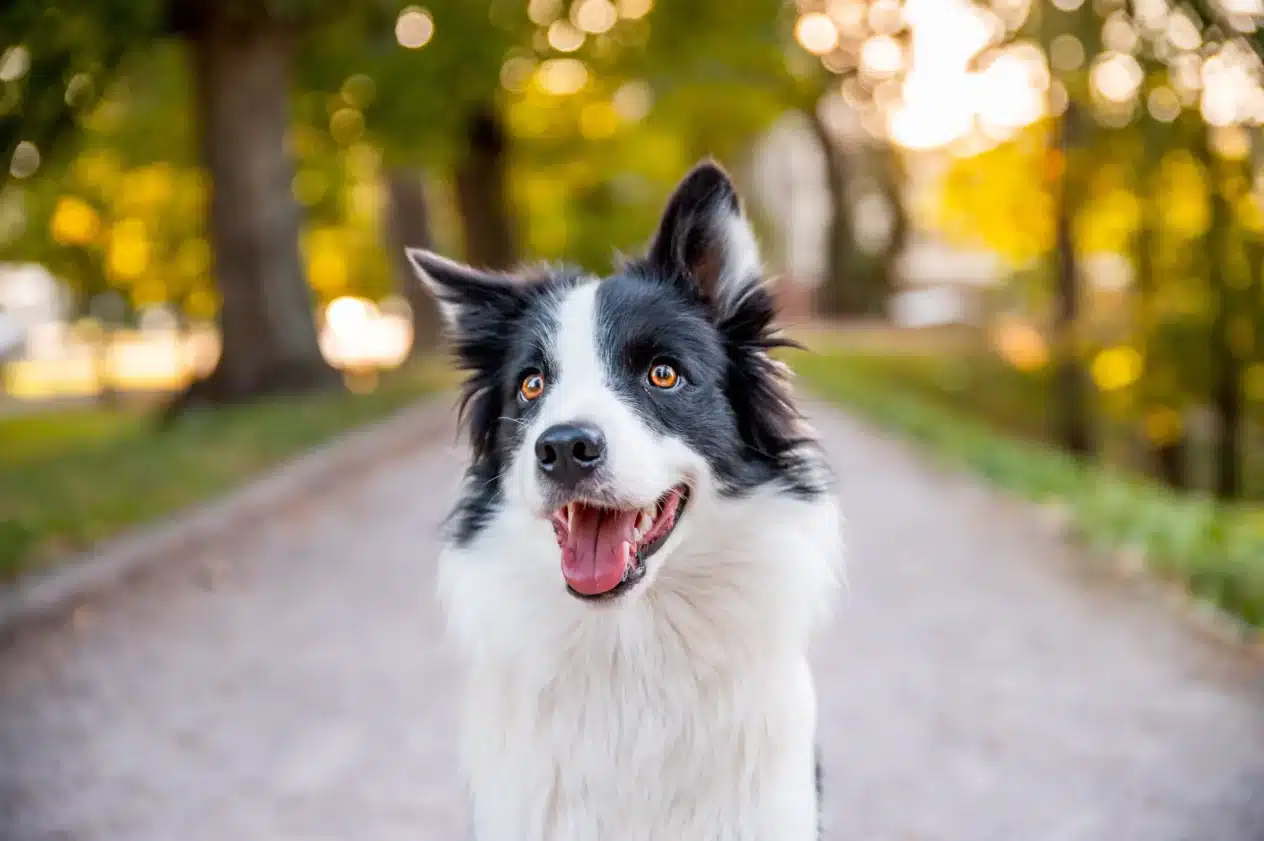
Border Collie Health
If you’re considering getting a Border Collie puppy, it’s essential to check their pedigree and ensure the parents have undergone genetic testing. If you already have a Border Collie, be aware of the common health issues they may face.
- Hip dysplasia is a frequent issue in active breeds. To reduce the risk, maintain a healthy weight for your dog, avoid excessive strain on their joints, and consider supplements for joint support.
- Collie Eye Anomaly is a hereditary condition that can lead to partial or complete blindness. Since genetics cannot be changed, regular vet check-ups and vision screenings are crucial.
- Epilepsy may present as mild tremors or severe seizures, so it’s important to monitor your dog’s condition and seek veterinary care when needed.
- Sensitivity to anesthesia – due to their unique metabolism, Border Collies may react differently to certain anesthetics. Always discuss safe options with your veterinarian before any procedure.
To keep your dog as healthy as possible and detect any potential issues early, schedule regular vet visits, follow vaccination schedules, and ensure routine deworming and parasite prevention.
Border Collie Nutrition
Border Collies require a balanced diet rich in proteins and fats that matches their activity level. If you don’t have the time or desire to prepare natural food for your pet, you can choose high-quality dry food from a pet store, paying attention to its ingredients. Foods designed for active breeds often have a corresponding label.
If you prefer natural feeding, include foods such as chicken, beef, turkey, fish, eggs, carrots, pumpkin, broccoli, rice, buckwheat, and oatmeal (if there are no allergies). It is also recommended to consult a veterinarian regarding supplements for joint health.
It is important to remember that dogs should not be given fried, fatty, smoked, or sugary foods. Chocolate, onions, and grapes are toxic to them!
To avoid digestive issues, follow a feeding schedule, prevent sudden diet changes, and always provide fresh water in the bowl so your dog can quench its thirst at any time.
Border Collie Grooming
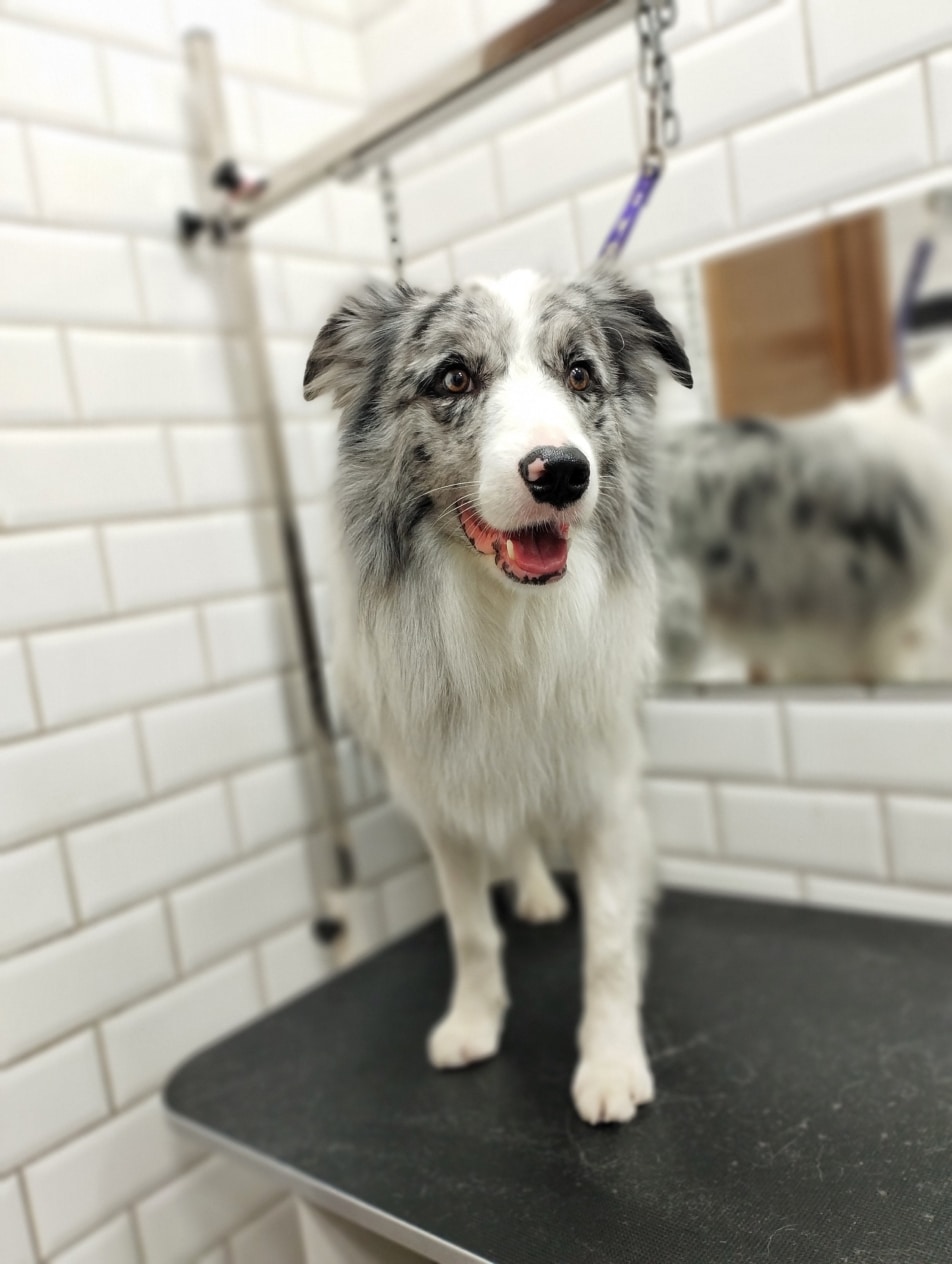
Since Border Collies have a dense undercoat that protects them from cold, rain, and heat, regular grooming is essential. Brushing their coat 3-4 times a week reduces the risk of overheating in summer and hypothermia in winter, minimizes shedding in the home, and prevents matting.
If your dog loves running through puddles, playing in the dirt, and exploring the outdoors, bathing will be necessary more often. Otherwise, a bath every 1-2 months using a specialized dog shampoo and conditioner is sufficient. Always dry your dog thoroughly with a towel and a blow dryer afterward.
Pay attention to your Border Collie’s teeth by brushing them 2-3 times a week with a dog-friendly toothpaste and toothbrush, and offer dental chews for extra care. If you notice tartar buildup, consult a veterinarian for professional cleaning.
Their ears and eyes are typically healthy, but regular care is still important. Once a week, use a cotton pad and a gentle cleaning solution to wipe away any dirt or buildup.
Border Collie nails should wear down naturally through regular walks, but check their length periodically. If the nails touch the floor while walking, it’s time for a trim.
Due to their active lifestyle, Border Collies’ paw pads can be prone to irritation or minor injuries. To prevent issues, wash their paws after winter walks to remove de-icing chemicals and avoid walking on hot pavement in summer. Special paw balms can help protect the skin.
Border Collie grooming also includes trimming, but not in the usual sense. Shaving or cutting their coat too short is not recommended, as this disrupts their natural temperature regulation. Instead, light trimming around the paws, tail, and hygiene areas can help maintain cleanliness and comfort.
At V.O.G DOG SALON, our expert groomers specialize in animal care, ensuring a safe and pleasant grooming experience for your pet. If you’re unsure about grooming or don’t have the time, let us handle it for you!
Conclusion
The Border Collie is an incredible breed, but it is best suited for active and responsible owners. You can’t just adopt one as a casual companion and expect short walks to be enough—this breed needs structured training, a clear routine, and an owner who understands its needs.
If you’re looking for a calm and low-maintenance pet, the Border Collie is not the right choice. But if you’re ready for adventure, an active lifestyle, and a dog that will amaze you with its intelligence and energy, then this might just be the best decision you ever make!

